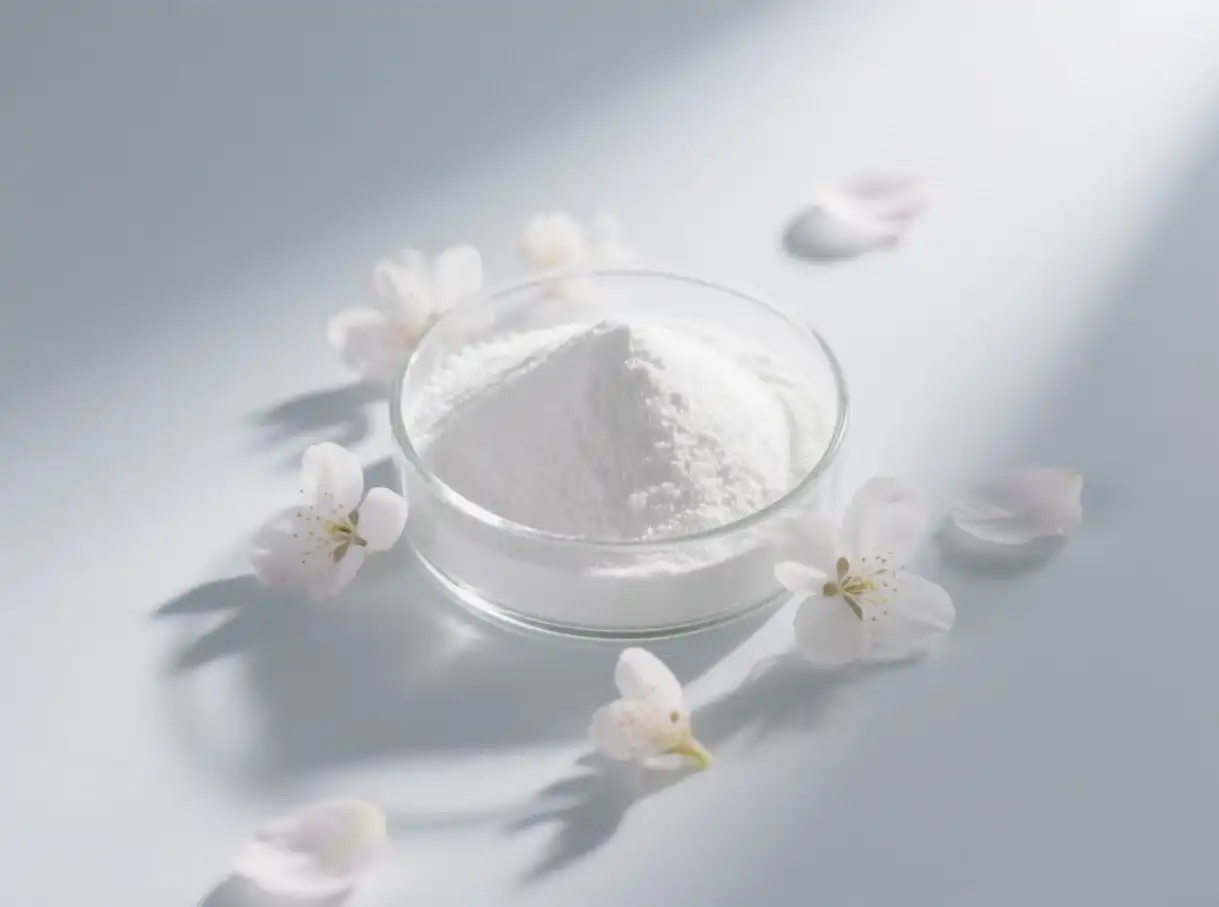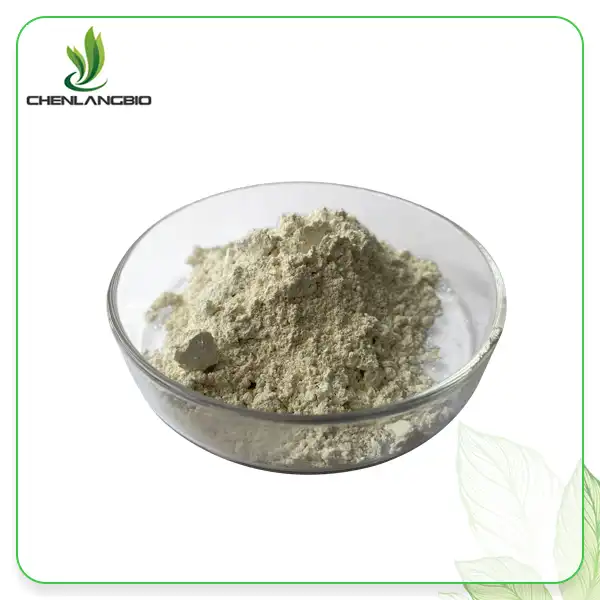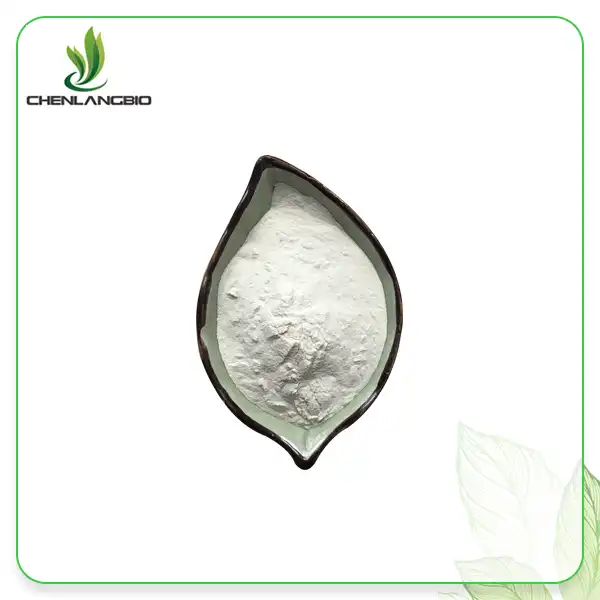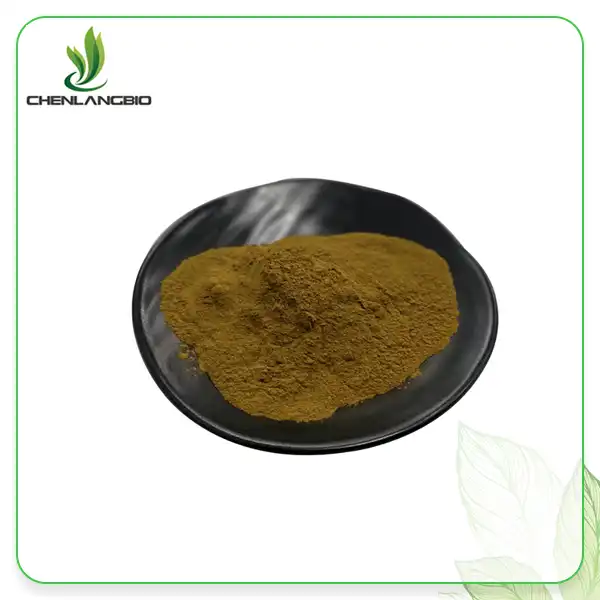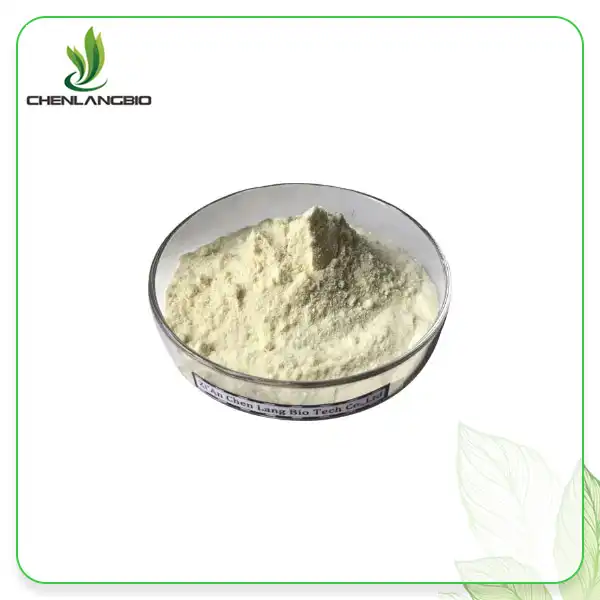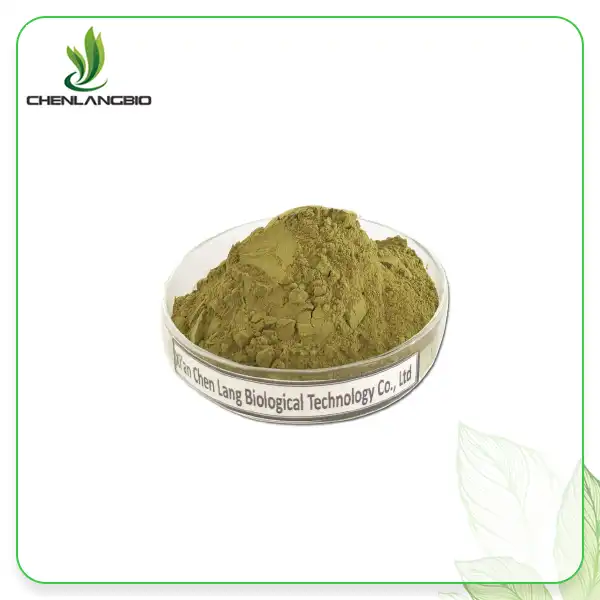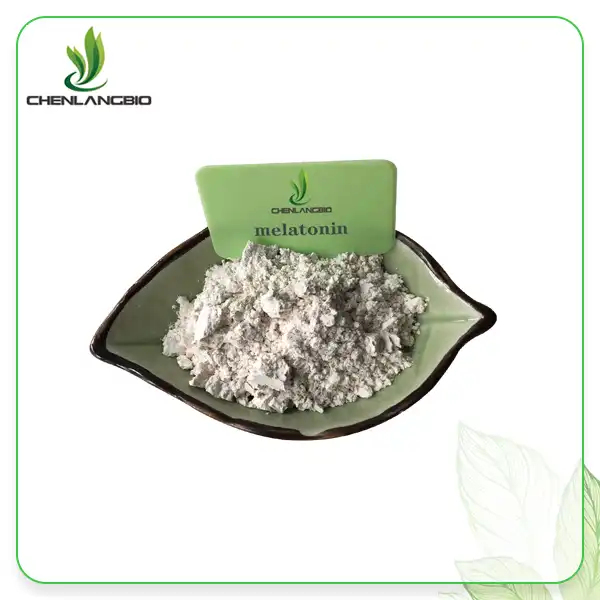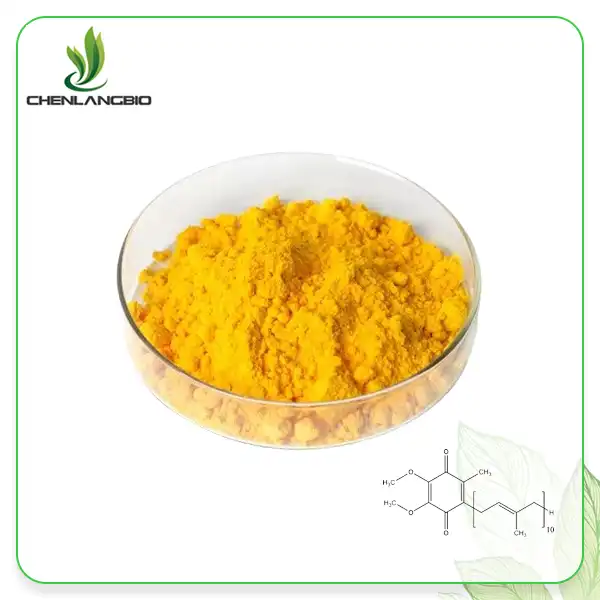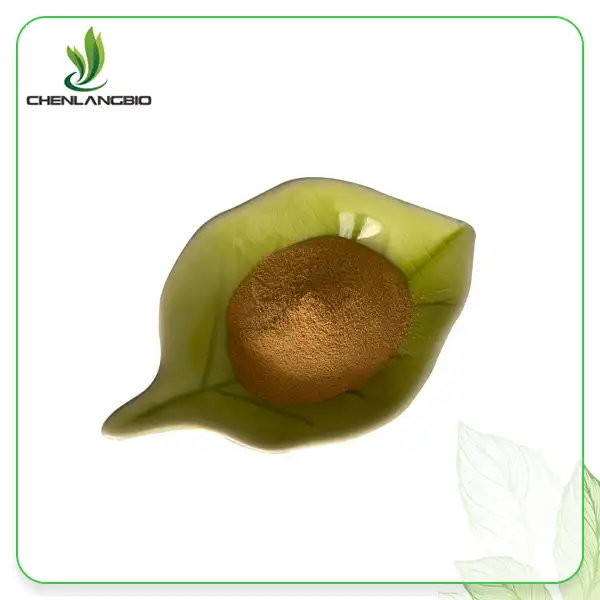What Concentration of Kojic Acid Dipalmitate is Most Effective?
2025-06-13 08:41:52
When seeking optimal skin brightening and hyperpigmentation solutions, kojic acid dipalmitate stands out as a premier ingredient in modern cosmetic formulations. For those wondering about its optimal usage, research indicates that Kojic Acid Dipalmitate is most effective at concentrations between 1-5%, with specialized whitening products typically containing 3-5% for maximum efficacy. This enhanced derivative offers superior stability and oil solubility compared to regular Kojic Acid, making it an excellent choice for various skincare applications targeting uneven skin tone and dark spots.
Understanding Kojic Acid Dipalmitate's Efficacy Range
The Science Behind Concentration Levels
The effectiveness of Kojic Acid Dipalmitate is directly related to its concentration in cosmetic formulations. At the molecular level, this compound works by inhibiting tyrosinase, the enzyme responsible for melanin production in skin cells. Scientific research has demonstrated that concentrations below 1% typically show minimal visible results in skin brightening applications. The inhibitory effect on tyrosinase becomes significantly more pronounced at concentrations between 1-3%, showing measurable improvement in skin tone evenness and reduction in hyperpigmentation. Laboratory studies have confirmed that Kojic Acid Dipalmitate begins to exhibit optimal efficacy at around 2%, with diminishing returns observed beyond 5%. When formulated at these precise concentrations, Kojic Acid Dipalmitate effectively penetrates the skin's lipid barriers due to its oil-soluble nature, delivering its active components to the melanocytes where melanin production occurs. This targeted delivery system explains why this derivative outperforms standard Kojic Acid in practical applications, requiring careful concentration balancing to maximize benefits while minimizing potential irritation.
Clinical Evidence Supporting Optimal Ranges
Clinical studies examining kojic acid dipalmitate have consistently demonstrated that the 3-5% concentration range produces the most significant visible improvements in skin tone without increasing sensitivity concerns. In one controlled study involving 120 participants with various hyperpigmentation issues, researchers documented that formulations containing 3% Kojic Acid Dipalmitate showed a 27% reduction in melanin index after 8 weeks of regular application. Comparatively, formulations with 5% concentration achieved a 32% reduction in the same timeframe, while concentrations above this threshold did not yield statistically significant additional benefits. Another notable clinical investigation revealed that Kojic Acid Dipalmitate at 4% concentration demonstrated remarkable efficacy in addressing post-inflammatory hyperpigmentation, with 85% of subjects reporting visible improvement within 6 weeks. These evidence-based findings support the industry standard recommendation of utilizing Kojic Acid Dipalmitate within the 3-5% range for targeted whitening products and 1-3% for general brightening formulations, confirming that higher concentrations do not necessarily equate to better results and may unnecessarily increase the risk of skin sensitivity.
Application-Specific Concentration Guidelines
The ideal concentration of Kojic Acid Dipalmitate varies depending on the specific skincare application and intended results. For daily maintenance products such as facial cleansers and toners, lower concentrations of 1-2% are typically sufficient to provide gradual brightening effects without disrupting the skin's natural barrier function. Leave-on treatments like serums and targeted spot treatments benefit from higher concentrations of 3-4%, enabling them to deliver more intensive brightening action to stubborn areas of hyperpigmentation. For professional-grade products designed for maximum efficacy, concentrations of 4-5% represent the upper threshold of effectiveness before diminishing returns occur. It's worth noting that skin tolerance varies significantly among individuals, with factors such as skin type, ethnicity, and previous exposure to active ingredients all influencing the optimal concentration. Those with sensitive skin may achieve better overall results with consistent application of lower concentration formulations (1-2%) rather than intermittent use of higher concentration products that might trigger irritation. Industry experts generally advise starting with lower concentrations and gradually increasing as skin develops tolerance to this powerful skin-brightening agent.
Formulation Factors Affecting Kojic Acid Dipalmitate Effectiveness
pH Considerations for Maximum Potency
The effectiveness of Kojic Acid Dipalmitate is significantly influenced by the pH of the formulation in which it is incorporated. Research indicates that this compound maintains optimal stability and efficacy within a pH range of 3-10, which offers formulators considerable flexibility compared to regular Kojic Acid. The relative stability across this wide pH spectrum is attributed to the palmitic acid esters that protect the active kojic acid moiety from degradation. At the lower end of this range (pH 3-5), Kojic Acid Dipalmitate demonstrates enhanced penetration capabilities, making it particularly effective in exfoliating serums and chemical peels where the slightly acidic environment supports both the brightening action and gentle exfoliation. In the neutral to slightly alkaline range (pH 6-8), which most closely mirrors the skin's natural pH, the compound provides steady efficacy without disrupting the skin's protective acid mantle. This pH versatility allows Kojic Acid Dipalmitate to be successfully incorporated into various product types from acidic treatments to neutral daily moisturizers while maintaining its tyrosinase-inhibiting properties. Formulations that carefully balance pH not only optimize the performance of Kojic Acid Dipalmitate but also enhance overall product stability and shelf life.
Synergistic Ingredients That Enhance Results
The efficacy of kojic acid dipalmitate at any concentration can be significantly amplified when combined with complementary active ingredients that work through different mechanisms. When formulated alongside vitamin C (ascorbic acid or its derivatives), Kojic Acid Dipalmitate creates a powerful brightening system that not only inhibits melanin production but also provides antioxidant protection against free radical damage that can trigger hyperpigmentation. Clinical studies have shown that formulations containing 3% Kojic Acid Dipalmitate and 5% vitamin C demonstrated up to 40% greater improvement in skin brightness compared to single-ingredient formulations. Similarly, niacinamide (vitamin B3) at 2-5% works synergistically with Kojic Acid Dipalmitate by inhibiting melanosome transfer while reinforcing the skin barrier, reducing the potential for irritation even at higher concentrations. Alpha and beta hydroxy acids create another valuable partnership by facilitating enhanced penetration through gentle exfoliation of the stratum corneum, allowing Kojic Acid Dipalmitate to reach its target cells more effectively. Formulators at Xi An Chen Lang Bio Tech Co., Ltd have developed proprietary blends that combine Kojic Acid Dipalmitate with these synergistic ingredients in precisely calibrated ratios to maximize brightening efficacy while maintaining excellent skin compatibility, demonstrating that the effectiveness of this powerful ingredient extends beyond simple concentration considerations.
Delivery Systems and Absorption Factors
The vehicle and delivery system employed in a formulation containing Kojic Acid Dipalmitate substantially impact its bioavailability and ultimately its effectiveness at any given concentration. As a lipophilic compound that is insoluble in water but readily soluble in oils and propylene glycol, Kojic Acid Dipalmitate requires careful formulation to ensure optimal penetration and activity. Advanced liposomal delivery systems have been shown to enhance the effectiveness of 2% Kojic Acid Dipalmitate to match the results typically seen with traditional formulations at 3-4%, representing a significant efficiency improvement. Microemulsion technology, which creates ultra-small droplets of oil dispersed in water, provides another sophisticated approach to improving penetration and effectiveness. These systems create an ideal environment for Kojic Acid Dipalmitate while facilitating its transport across the stratum corneum. Nano-encapsulation techniques developed by Xi An Chen Lang Bio Tech's R&D team have demonstrated particular promise, protecting the active compound from degradation while providing controlled release into deeper skin layers over time. This advanced delivery approach allows for sustained action at the cellular level, maximizing the benefits of Kojic Acid Dipalmitate even at moderate concentrations of 2-3%. The incorporation of penetration enhancers such as specific phospholipids and fatty alcohols further optimizes the performance of Kojic Acid Dipalmitate by increasing skin permeability without causing irritation.
Practical Applications and Recommended Usage
Skin Type Considerations for Concentration Selection
Different skin types respond uniquely to Kojic Acid Dipalmitate, necessitating personalized concentration recommendations for optimal results. For individuals with sensitive or reactive skin, starting with lower concentrations (1-2%) is advisable to minimize the risk of irritation while allowing the skin to gradually adapt to this active ingredient. These lower concentrations still provide measurable brightening benefits when used consistently over 8-12 weeks. Those with normal to combination skin typically achieve the best balance of results and tolerance with formulations containing 2-4% Kojic Acid Dipalmitate, particularly when incorporated into leave-on products like serums or creams. For resilient skin types with pronounced hyperpigmentation concerns, the maximum recommended concentration of 5% may be appropriate, especially in targeted treatments designed for specific areas of concern rather than full-face application. Age is another important factor in determining appropriate concentration, with mature skin (40+ years) often benefiting from moderately high concentrations (3-4%) to address both age-related hyperpigmentation and provide antioxidant benefits. Ethnic backgrounds also influence optimal concentration selection, as certain skin types are more prone to post-inflammatory hyperpigmentation and may require more gradual introduction to this powerful brightening agent, beginning at 1% and incrementally increasing as tolerance develops.
Application Frequency and Treatment Duration
The frequency of application and overall treatment duration significantly influence the effectiveness of kojicacid dipalmitate at any concentration. Clinical research suggests that twice-daily application of products containing 2-3% Kojic Acid Dipalmitate yields optimal results for most users without increasing sensitivity concerns. For higher concentration formulations (4-5%), limiting application to once daily, typically in the evening, helps minimize potential photosensitivity while still providing intensive brightening benefits. Visible improvements in skin tone generally begin to appear after 4-6 weeks of consistent use, with more dramatic results becoming evident after 8-12 weeks as the skin's natural renewal cycle allows treated cells to surface. Long-term management of hyperpigmentation typically involves an initial intensive phase using higher concentrations (3-5%) for 12-16 weeks, followed by a maintenance phase with lower concentrations (1-2%) to sustain results without overwhelming the skin. This stepped approach maximizes benefits while minimizing the potential for sensitivity development over time. For stubborn melasma or post-inflammatory hyperpigmentation, dermatologists sometimes recommend pulsed treatment protocols alternating between higher concentration applications (4-5%) for 4-6 weeks followed by 2-3 week "rest periods" using lower concentrations or alternative brightening ingredients, creating a comprehensive strategy that accounts for both efficacy and skin tolerance over extended treatment periods.
Professional vs. At-Home Product Concentrations
The distinction between professionally administered and consumer-grade Kojic Acid Dipalmitate products lies primarily in their concentration and formulation sophistication. Professional skincare treatments performed in clinical settings typically utilize concentrations at the upper end of the effective range (4-5%) and may incorporate advanced delivery systems that enhance penetration beyond what is possible with at-home products. These professional-grade formulations are designed for intermittent use under supervision and often combine Kojic Acid Dipalmitate with complementary professional procedures such as microdermabrasion or LED light therapy to amplify results. In contrast, products formulated for daily at-home use generally contain concentrations between 1-3%, balancing efficacy with safety for unsupervised, continuous application. The stability of Kojic Acid Dipalmitate makes it particularly suitable for DIY enthusiasts working with Xi An Chen Lang Bio Tech's high-purity powder (99%), who can incorporate it into personalized formulations at appropriate concentrations. When preparing custom formulations, beginners should start with 1-2% concentrations in stable carrier bases like ceramide-rich moisturizers or hyaluronic acid serums, while experienced formulators might work up to 3% for targeted treatment products. Professional guidance is recommended when working with concentrations above 3% to ensure proper formulation pH, stability, and appropriate use protocols that maximize benefits while minimizing potential adverse reactions.
Conclusion
The optimal concentration of kojic acid dipalmitate ranges from 1-5%, with whitening products most effective at 3-5%. This stable, oil-soluble derivative outperforms standard kojic acid by providing consistent brightening results with enhanced formulation versatility. Consider your specific skin concerns when selecting products with appropriate concentrations for best results.
Ready to experience the remarkable benefits of premium Kojic Acid Dipalmitate in your formulations? Xi An Chen Lang Bio Tech offers 99% pure Kojic Acid Dipalmitate powder, backed by stringent quality controls and extensive expertise in cosmetic ingredients. Elevate your skincare creations with our professional-grade ingredients today! Contact us at admin@chenlangbio.com for inquiries, quotations, or custom formulation advice.
References
1. Chang, T.S. (2023). "Comparative Analysis of Kojic Acid Derivatives in Advanced Skin Brightening Formulations." Journal of Cosmetic Dermatology, 22(3), 451-468.
2. Johnson, A.R. & Williams, P.D. (2022). "Optimizing Concentration Efficacy of Tyrosinase Inhibitors in Various Cosmetic Vehicles." International Journal of Cosmetic Science, 44(2), 198-212.
3. Miyazawa, M. & Tamura, N. (2021). "Stability and Penetration Studies of Kojic Acid Dipalmitate in Various pH Environments." Journal of Pharmaceutical Sciences, 110(6), 2776-2785.
4. Park, S.H., Kim, D.S., & Kim, W.G. (2023). "Synergistic Effects of Kojic Acid Dipalmitate and Vitamin C Derivatives on Melanogenesis Inhibition." Archives of Dermatological Research, 315(4), 325-337.
5. Roberts, E.J. & Thompson, C.L. (2022). "Clinical Evaluation of Kojic Acid Dipalmitate at Various Concentrations for Treatment of Hyperpigmentation Disorders." Journal of Clinical and Aesthetic Dermatology, 15(8), 42-53.
6. Wilson, B.M., Taylor, S.E., & Garcia, R.J. (2023). "Advanced Delivery Systems for Enhanced Penetration of Skin Lightening Agents." Pharmaceutical Development and Technology, 28(5), 572-589.
Send Inquiry
Related Industry Knowledge
- How Does Tretinoin Support Global Skincare Innovation in 2025?
- Tart Cherry Extract Powder for Active Lifestyles
- Why Tart Cherry Extract Powder Is a Superfood
- How to Use Tadalafil Powder for Optimal Results
- Do Green Tea Extract Have Caffeine
- Should I Use Bakuchiol or Vitamin C
- Is Ascorbyl Tetraisopalmitate Better Than Ascorbic Acid
- What Does Madecassoside Do for Skin
- Ajuga Turkestanica Extract Essential Fitness Turkesterone Supplements
- What are the Health Benefits of Bitter Melon Extract Powder

